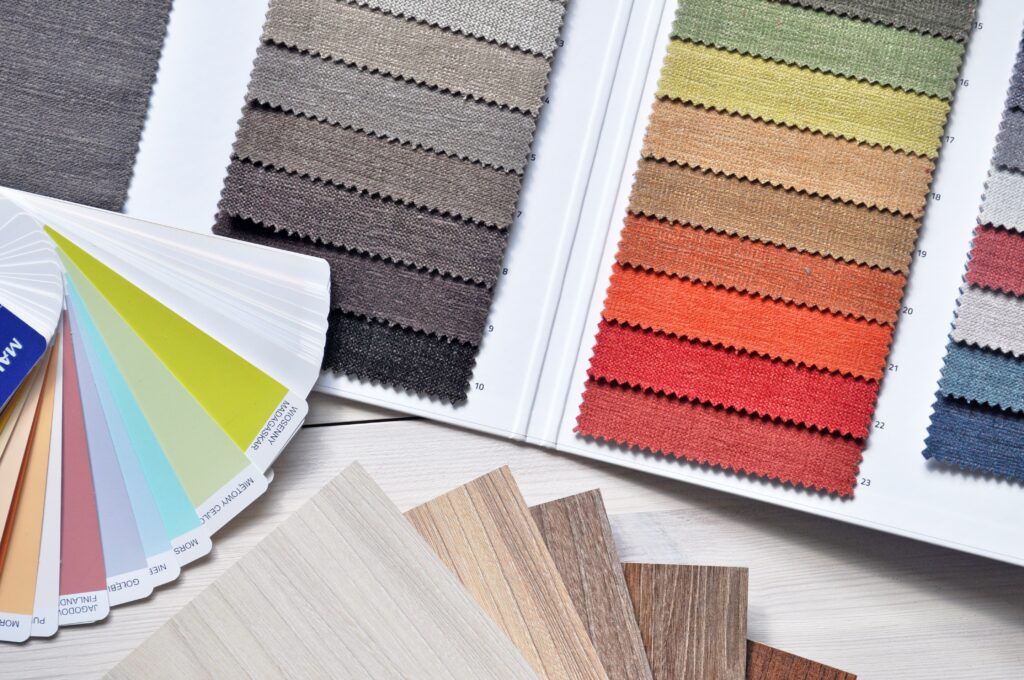Hints & Tips
The Art of Tying it All Together – the Fundamentals of Interior Design Which Make or Break a Space
Making your space just right – the art of interior design
Some of the words used to describe the principles of interior design – rhythm, harmony and repetition, for example – are ones more commonly associated with another mode of expressive creativity: music. This is no mistake. A succession of connected stimuli designed to evoke a particular response could just as easily be talking about a well-thought-out design scheme as it could a symphony.
This idea of lots of individual pieces coming together to form something greater than the sum of its parts is what design is all about. You can have the best pieces of furniture in the world, but without an underlying aesthetic that links one with the other, the space will feel out of balance and unsettled. Conversely, with the right plan, even the most humble of budgets can produce a homely and harmonious environment.
So, what should we be thinking about to ensure that everything in our design scheme sings from the same song-sheet? Here’s a few important points to consider…
Composition in the Abstract
Before we talk about specific aspects of a room’s design, we’ll take a quick look at what is meant by some of the terms mentioned above and how they can be applied to a scheme.
Rhythm
In music, rhythm is the organisation of notes over a certain period of time. If you think of the start and the end of a piece of music, the rhythm dictates our progression from one to the other. When applied to interior design, the idea is much the same, in that it encourages us to move our eye-line along a space in a particular way, or experience it in a specific order.
There are 6 basic principles to rhythm within interior design. Implement these in your home to create a sense of flow and movement.
• Repetition: The consistent use of singular design elements, repeated in a regular way. Shapes, textures, materials, soft furnishings and everything in between can be repeated to create this sense of rhythm.
• Alternation: Establish a pattern by alternating between two or more features in regular intervals. This method can often be seen in brickwork and tiling.
• Contrast: Create visual interest by offsetting one design element against another.
• Radiation: Using a central focal point, place design elements in such a way as to draw attention to the centrepiece. The way seats are rotated around a TV is a common example of radiation in practice.
• Gradation: A slow transition from one design extreme to another. Lighter elements shifting towards darker ones, for instance.
• Transition: The use of design features to create a sense of continuous movement from one space to another. Arched doorways are common examples of this.
Harmony
If we are to create a space that is inviting and comforting, it is important that the individual elements within the scheme complement each other and are in tune with the overall intended feel. In theory, this concept is simple enough, but in practice, it is a challenge and is often seen as one of the trickier aspects of interior design to pull off. A lack of harmony in a space will make it feel cluttered and uncoordinated – and is arguably more important than any singular piece within a scheme.
In Tune and On Time: The Blueprint for Success
Now that we have these concepts in the back of our mind, we can move into specifics. From here, it’s a question of asking yourself what you want the room to be for and how you would like it to feel – and then following these steps to achieve it.
Purpose
Our intended use of a room will largely dictate the kind of things we would want to have in there and how they might best be organised. An office should be clean and sparse, devoid of distractions, whereas a space to sit and socialise can afford to be a bit busier. An open-plan setup can be multi-functional, but then it’s important to consider how delineation from one type of space to another might be achieved.
Theme
A vital part of creating cohesion and balance in a space is to establish a theme. An extreme example would be when you decorate a child’s bedroom; the theme might be pirates or dinosaurs. More often than not, we wouldn’t be looking for something so extreme, but the logic is the same.
A theme can be as simple as the colour scheme. Using the same tones on various aspects of a room’s design can quickly bind multiple elements together. A perennially popular way of asserting a unifying theme is to choose colours and furniture pieces and artworks from a particular period of time. Art deco, with its use of simple shapes and clean colours, is an easily recognisable example of this.
Design Details
A quick and effective way of tying lots of separate elements of a room together is to match the details of their finish. Having the same kind of carving and treatment on various items of wooden furniture is commonly employed for this effect. It needn’t be ornamentation that acts as the cohesive element either: the Scandinavian design ethos has made minimalism just as stylish and distinctive.
Lighting
When we walk into a room, lighting is one of the main ways we can draw focus to particular points of interest. Correctly placed and powered lighting can bring all the elements of your design into play in exactly the way you intend. Poorly conceived lighting, on the other hand, can make the difference between certain elements being noticed or not – fairly obviously – so it’s important to get it right. Lighting is not only absolutely essential in how we experience a particular place; the fittings provide an opportunity for continuity, too.
The Bigger Picture
If we want to create a space that is cohesive and unified, rather than thinking about specific aspects on their own terms, try picturing it all as one, singular thing. Just like in music, it’s not the individual notes that we respond to, it’s the context of their placement that really makes the difference.

